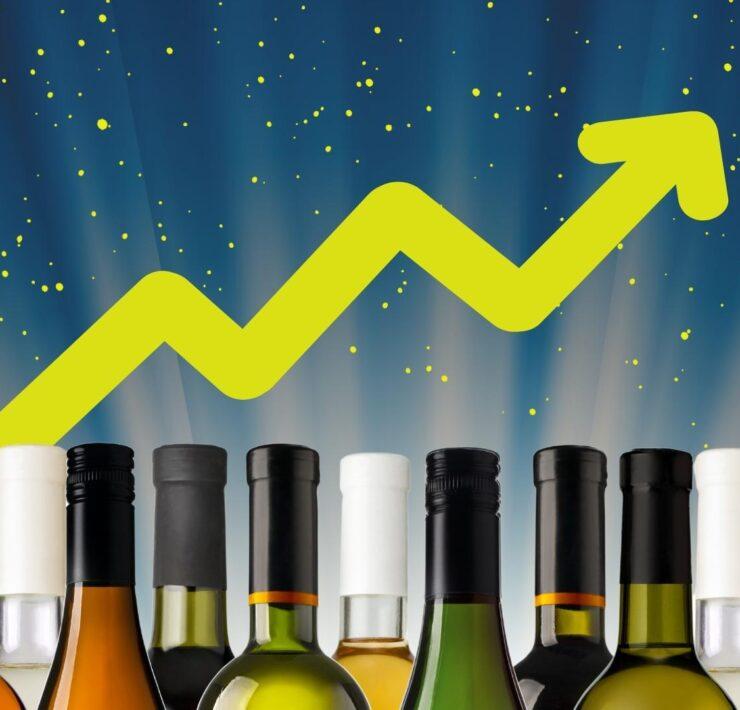On any given evening in Portugal, whether in the Douro or 60 miles back the winding road west to Porto — Portugal’s second largest city — locals sip port and tonics as an aperitif and finish a meal with a healthy pour of ruby or tawny port, complemented by desserts like sweet egg cream.
Port is a lifestyle there and in many parts of Europe and the U.K. In 2022, Future Market Insights anticipated the European port wine market to dominate the global market with a share of 34.2%. For the majority of Americans, however, port is still catching on. As it does, the industry is noticing a market trend — port production is decreasing while its quality is increasing.
Adrian Bridge, CEO of the Fladgate Partnership, provides some context, sharing that in the Douro Valley, about 60% of port production is by co-ops, which makes it difficult to ensure quality control. However, what he’s witnessed in the past decade, which was further propelled by the global pandemic, is the shift in demand for quality ports.
“[There’s] a decoupling of the premium segment from the commodity end of the category,” shares Bridge. “Whereas the latter is in gradual long-term decline, the premium segment displays a very healthy growth trend.”
The trend is so noticeable, in fact, Bridge predicts that by the end of the year, quality ports could comprise 50% of the global market.
What Exactly Defines a Quality Port?
Quality, or premium port, is not a legal definition, Bridge prefaces. Still, many consider it a category and “one The Fladgate Partnership would define as reserve ruby and reserved tawny port and above.” The Fladgate Partnership is famous for port brands, including Taylor’s, Fonseca, Croft and Krohn. “Two good examples of a reserve ruby port would be Fonseca Bin 27 — the number one reserve ruby in the United States — and Taylor’s Historical Collection as a reference for a reserve tawny port,” shares Bridge.
Luís Sottomayor, Sogrape Douro chief winemaker, notices the shift occurring particularly in the U.S. “In the last few years, we have [seen] a small decrease in sales (volume), but on the other hand, sales are rising in premium categories, which means people are drinking better port,” says Sottomayor. He also shares statistics on 10-year-old port in the Sandeman aged tawny category, decreasing 2.8% in volume but growing 3.7% stateside.
For Sandeman, a historic port house founded in 1790, “a quality port respects the house style and heritage,” says Sottomayor, sharing that this is what they look for throughout their range. Within Sandeman’s premium category, Sottomayor says that the ruby ports are distinctive for their intense color and plain fruit. Vintage expressions, in contrast, are recognizable by the classic profile and potential to bottle age for many years. Lastly, tawny ports showcase an outstanding elegance yet extraordinary complexity.
What’s Behind the Trend?
The trend of increasing sales of quality port can be attributed to consumer demand, as aforementioned with the pandemic, a time when people stopped waiting for an occasion to open premium products and were throwing more dinner parties at home (therefore spending less on costly menus and more on quality bottles).
Even before the pandemic, there was the better-for-you movement. “The global pattern of people drinking less, but better, accounts for this shift,” emphasizes Bridge. And that the shift is a result of “drinkers seeking more top quality ports due to a more informed and demanding consumer,” Sottomayor adds.
The shift is one that’s industry-wide and affects more than port. Bridge parallels the French drinking habits of 20 years ago. “Like many other European consumers, [they] were drinking over 75 liters of alcohol per capita per annum. This is now down to just 46 [liters] and is expected to fall further. Any business that relied on selling cheap alcohol to these consumers has suffered.”
So can this year be the year port really takes off stateside? Time will tell, but in the meantime, Bridge concludes that for companies entirely focused on port production at a premium level, “the future is very exciting.”









